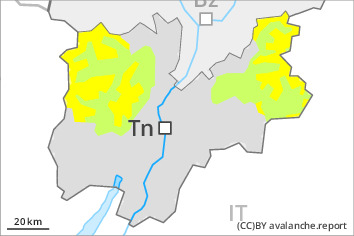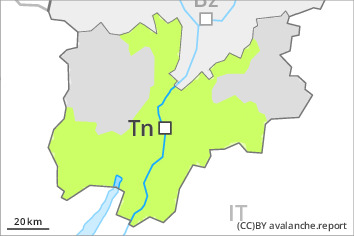
Danger level
 | 2500m |
|  |
|  | ||||
|  |
|  |

The fresh and older wind slabs must be evaluated with care and prudence on very steep shady slopes at high altitude. As the day progresses, a few moist snow slides are possible.
The no longer entirely fresh wind slabs can be released in isolated cases, but mostly only by large additional loads,, especially at their margins. They are to be found in particular on very steep shady slopes and adjacent to ridgelines. Mostly avalanches are small.
As a consequence of warming during the day and solar radiation more mostly small wet loose snow avalanches are possible below approximately 2500 m, in particular on steep east, south and west facing slopes in all altitude zones. Areas with glide cracks are to be avoided.
Snowpack
dp.10: springtime scenario
High altitudes and the high Alpine regions: The somewhat older wind slabs are lying on soft layers. They are in individual cases still prone to triggering.
Towards its base, the snowpack consists of faceted crystals. The snowpack will be subject to considerable local variations above the tree line.
Intermediate and high altitudes: The snowpack is moist and its surface has a melt-freeze crust that is strong in many cases, in particular on sunny slopes. During the day: The high temperatures will give rise to increasing moistening of the snowpack, in particular on sunny slopes.
Tendency
The avalanche danger will persist. Wet snow requires caution.




